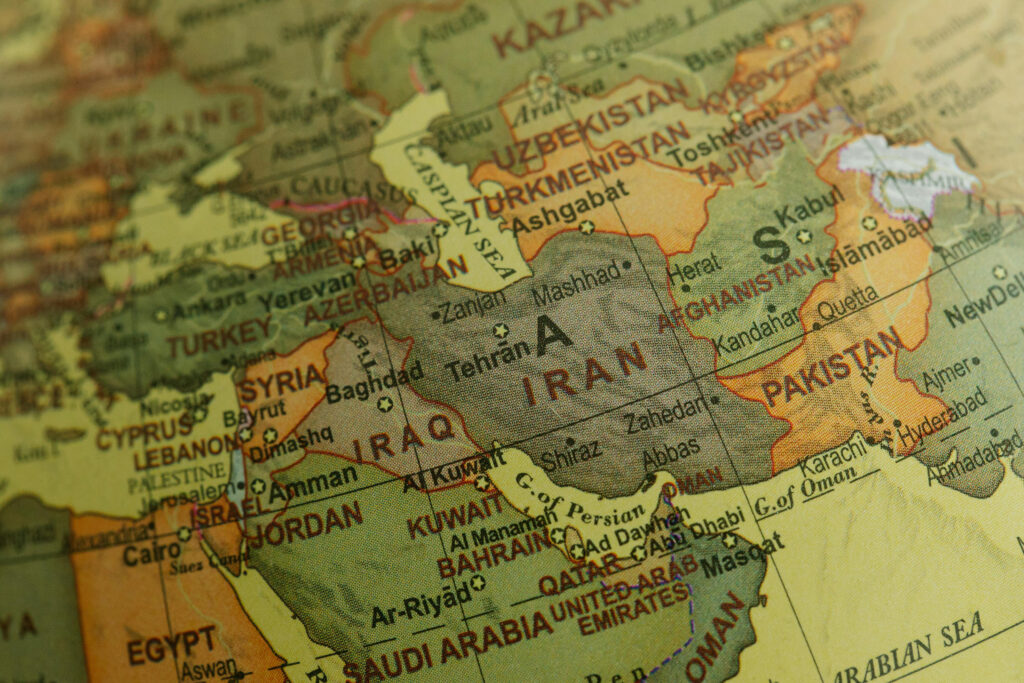
Trump Reinstates US Travel Ban, Bars Citizens of 12 Countries
According to Reuters, On June 4, 2025, former president and current US President Donald Trump signed a new executive order reinstating a travel ban that blocks citizens from 12 countries from entering the United States. This marks a strict return of a controversial policy that was first enacted during Trump’s first term. The latest move reportedly follows a national security rationale, although the full legal and political justification has not yet been publicly released.
Which Countries Are Affected?

According to initial reports, the 12 countries included in the ban are:
- Afghanistan
- Myanmar
- Chad
- Republic of the Congo
- Equatorial Guinea
- Eritrea
- Haiti
- Iran
- Libya
- (Other countries may be part of the list, based on previous travel ban patterns, but these have been mentioned by major outlets so far. The full official list will be released soon.)
Rationale Behind the Ban
Legal and Political Reactions
- Domestic Debate: The ban has already triggered intense legal and political debate in the US. Civil rights groups and immigration advocacy organizations are preparing to challenge the executive action in court, questioning its constitutionality and calling it discriminatory.
- International Reactions: Diplomatic responses from the blacklisted countries and international organizations are expected as the ban affects families, students, and businesses with cross-border ties.
Potential Impacts
1. Personal & Family Consequences
The travel ban introduces significant emotional and logistical hardship for individuals and families from the affected countries. The sudden restrictions disrupt planned reunifications and add layers of stress and uncertainty for those with loved ones abroad.
- Family separations become more common and long-lasting
- Heightened anxiety and psychological distress among those impacted
- Major disruptions to life plans, including education and career
2. Educational & Economic Effects
US universities, research centers, and industries may be hit hard by a loss of international students, academics, and skilled workers, all of whom contribute to vibrant campus life and economic productivity.
- Fewer foreign students and scholars in US institutions
- Potential loss of innovation and cross-cultural exchange
- Decreased tuition revenue and local economic impact
3. Social & Community Impacts
Diaspora communities in the US could feel increasing fear and marginalization, leading to greater demand for legal, mental health, and social support services.
- Growing insecurity among immigrant families
- Increased need for advocacy and support groups
- Rise in anti-immigrant sentiment or backlash
4. Diplomatic & International Repercussions
The new policy risks escalating diplomatic tensions, especially as affected nations and international organizations register formal objections or retaliate in kind.
- Strained relations with targeted countries
- Negative media coverage and reputation damage
- Potential for reciprocal travel or visa restrictions against US citizens
5. Legal & Political Fallout
This executive order will spark a new wave of domestic legal battles and renewed debates over the limits of presidential authority in immigration.
- Lawsuits from civil rights organizations and universities
- Highly polarized political responses
- Public protests and renewed focus on immigration law
6. Long-Term Trends
Over time, the US could lose its appeal as the top choice for international talent and students, as would-be immigrants look elsewhere for opportunity and stability.
- More people choosing Canada, Europe, or Australia
- Decline in the US’s global academic and talent leadership
- Erosion of America’s image as a welcoming, diverse nation
- Individuals and Families: Thousands of people—students, business professionals, families—are likely to be affected, either denied entry or left in uncertainty.
- Diplomatic Relations: The move could strain US relations with not just the directly affected countries, but also with allies and multilateral organizations concerned about broad or arbitrary restrictions.
- US Economy & Universities: American universities and industries dependent on foreign expertise and global exchange programs may face disruptions.
Next Steps and What to Watch
- Official Order Release: The full executive order text and a definitive list of affected countries are expected soon.
- Legal Proceedings: Watch for the first legal challenges over the coming weeks.
- Possible Revisions: The ban could see revisions as court challenges and political pressure evolve.
How Trump Justified the Ban
President Trump framed the renewed travel ban as a necessary response to growing national security concerns, emphasizing that several of the target countries—Iran included—either lack effective cooperation on security screening or pose significant security risks. He maintained that stronger border controls are vital for American safety.
Key justifications in Trump’s statements:
- National Security: Claim that unstable states could be sources of terrorism.
- Inadequate Vetting: Some governments allegedly do not share credible background information.
- Previous Precedents: Reference to earlier bans during Trump’s first term.
- Ongoing Review: Indication that the list of banned countries could change based on future cooperation.
Who Is Exempt from the Ban
While the ban is sweeping, certain categories of people are not included; these exceptions are based on international law and practical necessities, though all entrants may face additional screening.
Main exemptions:
- Holders of US green cards (permanent residents)
- Dual citizens travelling on a passport from a non-banned country
- Accredited diplomats and staff of global organizations (e.g., UN)
- Limited humanitarian or emergency cases (subject to extra scrutiny)
- Asylum seekers already present in the US (case-by-case review)
State Department Guidance
The State Department moved quickly to inform both travelers and staff about the new restrictions, aiming for transparency but also stressing strict compliance. Travelers have been strongly advised against attempting entry until further notice.
State Department directives:
- Suspension of almost all visa processing for affected countries
- Advance warning that valid visas do not guarantee US entry
- Enhanced review for all pending humanitarian and emergency cases
- No deportation risk for residents already in the US, but future renewals are threatened
- Embassies and consulates updating their travel alert systems
How the Ban Differs from 2017’s
The 2025 ban builds on the controversial 2017 order, but it is broader and more systematic. It covers more countries, more visa types, and tries to avoid some legal loopholes that were challenged in courts last time.
Notable differences from 2017:
- 12 countries now included (previously 7)
- Broader visa ban—includes more non-immigrant visas and student categories
- Stricter exception and waiver process, with fewer case-by-case approvals
- Framing: This ban is justified as an “intelligence-based review,” not just regional targeting
- Tighter diplomatic and information-sharing requirements for future reviews
Reactions to Trump’s Order
The announcement led to immediate political, legal, and public responses within the US and internationally. Critics argue the ban revives divisiveness and discrimination, while supporters claim it is crucial for national defense.
Prominent reactions:
- Lawsuits and statements from US civil rights and immigrant advocacy groups
- Outcry and warnings from affected countries’ governments, including Iran
- Concerns from American universities over student and researcher losses
- Protests and public demonstrations in multiple US cities
- Political debate in Congress and calls for legislative intervention
Consequences of New Ban Policies for Iranian Immigrants
For Iranians, the latest restrictions disrupt family life, academic opportunity, and business relationships, fueling both frustration and new migration patterns. The ban intensifies a sense of exclusion for many who once viewed the US as an accessible option.
Consequences for Iranians:
- Stranded families and canceled reunification plans
- Iranian students losing access to US universities and scholarships
- Professionals unable to attend business events or start jobs
- Increased anxiety and uncertainty, even for visa or green card holders
- Surge in interest toward Canada, European countries, and Australia for migration and study
What About Valid Visas?
Even valid US visas now come with no guarantee of entry; many holders find themselves in a precarious legal gray zone. The State Department and border officials have broad authority to deny access without detailed explanation.
For people with valid visas:
- May be denied boarding by airlines or entry at US borders
- Risk of visa revocation or cancellation without appeal
- US residents likely to face hurdles during visa renewals or travel abroad
- Need for constant attention to new State Department announcements
What Options Do Immigrant Iranians Have Now?
Given the deadlock with US entry, Iranians need to quickly assess workable alternatives for migration, studies, or family reunification. While options are limited, lawful and safer pathways do exist.
Practical options now:
- Apply to universities or jobs in Canada, Germany, France, Australia, or Turkey
- Consider distance education or hybrid study programs in Europe and Asia
- Explore legal paths for family reunification in other nations
- Seek professional legal advice before attempting any high-risk “backdoor” routes
- Monitor embassy and immigration news constantly for updates or waivers
What Is the Future Perspective of the New Bans?
There is broad uncertainty about how the situation will evolve, but activism and legal efforts mean the policy may not remain static. Both court outcomes and the political landscape could reshape the fate of the travel ban in coming years.
Likely scenarios ahead:
- Major legal challenges may overturn or modify the ban
- Political change after US elections could bring revised or repealed policies
- Ongoing unpredictability pushes globally mobile Iranians to diversify destinations
- The US’s image as an open society may further erode among affected populations
FAQs
1. What is the new US travel ban signed by President Trump in 2025?
The new travel ban is an executive order signed by President Trump on June 4, 2025, which blocks citizens from 12 countries—including Iran, Afghanistan, Myanmar, Chad, and others—from entering the United States. The government claims this is a national security measure.
2. Which countries are currently included in the 2025 travel ban?
As of now, the named countries are Afghanistan, Myanmar, Chad, Republic of the Congo, Equatorial Guinea, Eritrea, Haiti, Iran, and Libya. The full, official list is expected to be published soon, and may include more countries.
3. Why did President Trump justify this renewed ban?
Trump and his administration argue that the ban is necessary for national security because some countries are seen as unstable or do not cooperate enough with US security screening or information-sharing measures.
4. Who is exempt from the travel ban?
Exemptions include US green card holders (permanent residents), dual citizens using passports from countries not on the banned list, accredited diplomats, officials of recognized international organizations, some urgent humanitarian cases, and certain asylum seekers already in the US.
5. How does this 2025 travel ban differ from Trump’s 2017 ban?
The 2025 ban covers more countries (12 versus 7 in 2017), includes a wider range of visa types, has stricter processes for exceptions, and is framed as being based on intelligence and diplomacy, not just geography or religion.
6. What does the State Department say about traveling or applying for visas now?
The State Department has suspended most US visa processing in the affected countries and warns that even valid, previously granted visas do not guarantee entry. Humanitarian cases will be considered more carefully, and all embassy and consulate pages are being updated accordingly.
7. What happens if I have a valid US visa from one of the banned countries?
Having a valid visa does not guarantee entry; airlines may deny you boarding, and US border officials can still refuse entry. Even current residents may face future challenges when renewing their status or visiting home.
8. How are Iranian students, families, and professionals affected?
Iranian families can be stranded or separated, students might lose out on educational opportunities, and professionals could miss jobs or events. The ban is likely to push more Iranians to look for study, work, or migration options in Canada, Europe, and Australia.
9. Are there alternative options for Iranians affected by the ban?
Yes, Iranians may seek admission to universities or companies in countries like Canada, Germany, Turkey, or Australia. Pursuing education online and seeking family reunification in third countries are also options. Caution is strongly advised for anyone considering unofficial routes.
10. What could happen next with this travel ban policy?
Legal challenges have already begun and could modify or overturn the ban. Upcoming US elections may also change the political environment. For now, significant uncertainty remains for those from the affected countries, including Iran.






Responses